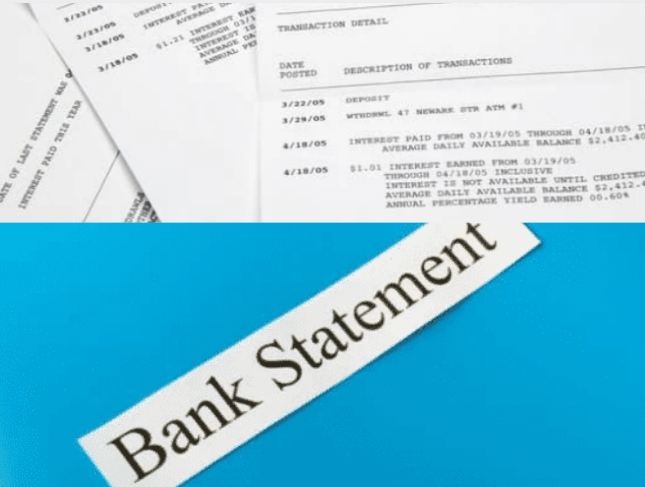What Is a Bank Statements? A bank statement is a document (also known as an account statement) that is usually sent each month by the bank to the account holder, which summarizes all transactions of an account during the month.
The bank statement contains bank account information, such as an account number and a detailed list of deposits and withdrawals.
The bank statement a document prepared every month by your financial institution. With the bank statement, you can view the income and expenditure activity related to the account.
By looking at your bank statement. You can see all the money deposits and withdrawals of your account in one place.
For each transaction, the date and other parties also show. This way, you can see who you paid (or who paid you) and the transaction was actually approved by the bank.
The statement includes deposits, charges, withdrawals, as well as beginning and ending balances for the period.
The bank statement includes the following information:
- Personal identification information, such as your bank account number, name, and address.
- The period of time included in your bank statement is usually one month.
- Information about the bank including customer service number and instructions for reporting fraud and mistakes.
- Balance for both the beginning and end of the statement period.
- All of the deposits into your account, including direct deposit, check, transfer, reimbursement, payment, and accrued interest.
- All the withdrawals from your account, including purchases, transfers, ATM withdrawals, automatic payments, and bank fees.
How a Bank Statement Works
A bank issues a bank statement to an account holder which shows detailed activity in the account. What Is Online Banking?
This allows the account holder to view all transactions processed on their account.
It designs to show you what happened to your account during the previous month to detail your spending habits and any kind of expenses.
Most bank statements start with putting all deposits together, giving you an idea of what came into your account during the previous month.
Your summary will include your account balance at the beginning of the month, and then show your ending account balance after all deposits have been added and withdrawn.
Banks usually send monthly statements to the account holder on a specified date. In addition, transactions on a statement usually appear in chronological order.
Benefits of a Bank Statement
Bank statements are a great tool to help account holders keep track of their money.
They can help account holders track their finances, identify errors and identify spending habits.
An account holder must verify their bank account on a regular basis — either daily, weekly, or monthly to ensure that their records match the bank’s records. It helps reduce overdraft fees, errors, and fraud.
The details of your transaction also include information about where the deposit came from and where the expenditure incurred.
Different Types of Bank Statements
Banks allow you to choose how you want to receive your bank statement.
Banks give account holders the option of receiving paper statements or using paperless, electronic ones, which are usually delivered via email.
You can receive a paper statement in the mail, or you can have an electronic bank statement posted to your account.
The electronic version of a bank statement known as an electronic statement or e-statement and allows account holders to access their statement online where they can download or print it.
To access your electronic bank statement, it usually required that you log into your account and look for a navigation item that indicates a bank statement.









